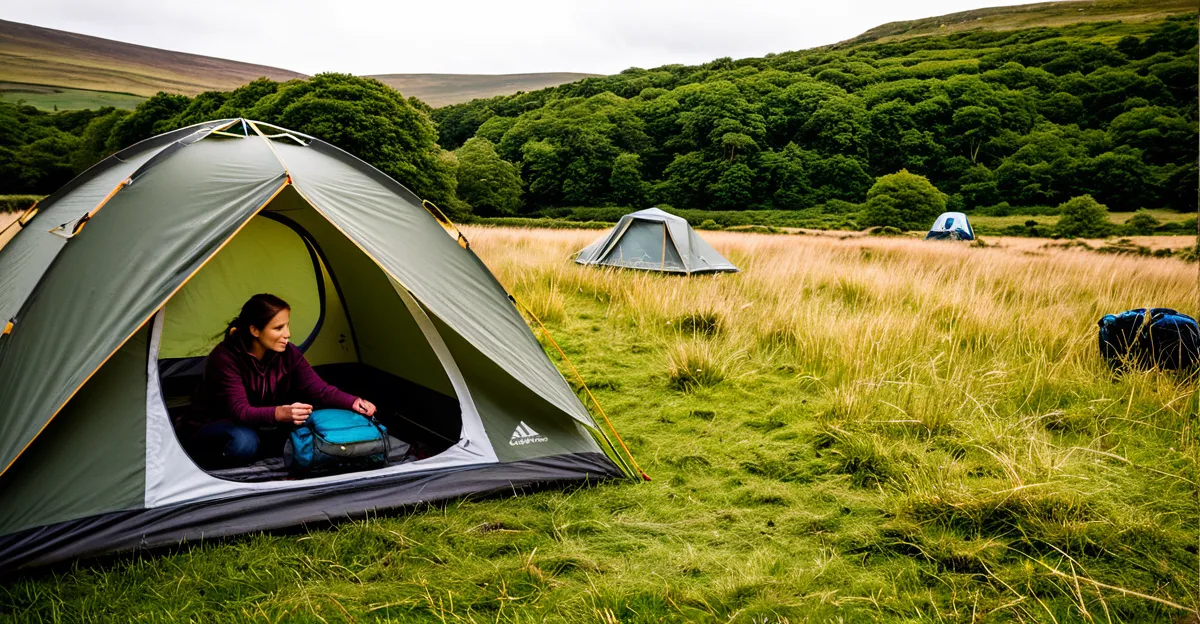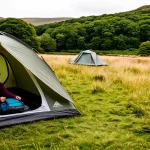Essential wildlife watching highlights for camping in the UK
When planning wildlife watching camping UK trips, understanding which species you might encounter adds great value. The UK offers diverse wildlife experiences UK, with popular species like red deer, otters, and various bird species including owls and kingfishers. Spotting these creatures requires heading to regions renowned for their natural habitats.
Scotland’s Highlands stand out as one of the best camping areas for wildlife. Here, watchers often see majestic red deer and elusive golden eagles. Similarly, the Lake District combines breathtaking landscapes with opportunities to observe foxes, badgers, and rare birds. In southern England, the New Forest is famed for its free-roaming ponies and rich birdlife, making it a top choice for best UK wildlife camping.
Also to discover : Why Should You Consider Non-Traditional UK Camping Destinations?
Choosing the right season enhances chances of sightings. Spring and early summer bring bird migrations and young mammals emerging, ideal for those seeking vibrant wildlife action. Autumn offers another perspective, with deer rutting season being a captivating event. Winter, while quieter, allows for spotting species like owls and red foxes that are more active during the cold.
Combining choice of location with timing enriches any wildlife watching camping UK experience, ensuring memorable and rewarding natural encounters.
Also to read : What Are the Most Unusual Camping Sites in the UK?
Top UK wildlife species to watch for while camping
Exploring the outdoors in the UK offers a fantastic chance to encounter a variety of wildlife species that make camping even more memorable. When considering UK wildlife camping, keep an eye out for iconic mammals such as deer, badgers, and foxes. Deer often appear at dawn or dusk, gracefully moving through woodlands. Badgers, mostly nocturnal, may be spotted near their setts if you’re quiet and patient. Foxes, adaptable and curious, can occasionally be seen exploring campsites, especially around dusk.
Birdwatchers will delight at notable species like owls, kingfishers, and red kites. Owls are fascinating for their silent flight and mysterious calls during the night. Kingfishers brighten riverbanks with their vivid blue and orange feathers and can often be seen darting near still water. Red kites, with their impressive wingspans, soar overhead and are a true treat for any camper lucky enough to spot one.
Amphibians, reptiles, and invertebrates also enrich the wildlife tapestry. From the rhythmic croaking of frogs near ponds to the occasional glimpse of slow-moving newts, these smaller creatures are essential parts of the ecosystem. Noticing these animals during your trip enhances the connection to nature and brings excitement to your camping experience.
Recommended campsites and prime locations for wildlife encounters
Discovering UK camping wildlife hotspots means venturing into areas where nature thrives visibly and audibly. Among the best campsites for wildlife in the UK, national parks like the Lake District and Cairngorms stand out for their rich biodiversity. These protected areas showcase species ranging from red deer to golden eagles, making every camping trip an immersive wildlife experience.
Nature camping in the UK also flourishes along coastal regions such as the Jurassic Coast, where campers can spot seabirds and marine life, or in woodlands like the New Forest. Coastal campsites offer the unique chance to witness seal colonies and migratory birds, while woodland sites provide encounters with badgers, foxes, and diverse songbirds.
Choosing a campsite in these locations ensures a blend of comfort and ecological richness. Some campsites prioritize preserving natural habitats, using minimal lighting to avoid disturbing nocturnal creatures. This approach enhances the potential for observing wildlife during both day and night.
In sum, exploring UK camping wildlife hotspots allows nature enthusiasts to connect deeply with the environment, enjoying both the tranquillity and the thrilling surprises that outdoor habitats provide. For anyone planning their next nature camping UK trip, targeting these prime locations guarantees unforgettable wildlife encounters.
Seasonal opportunities for wildlife watching while camping
Wildlife seasons UK offer a dynamic experience for campers eager to observe nature. The best time wildlife camping depends largely on what you wish to see. In spring and summer, the UK bursts with activity—bird migrations fill the skies, and many mammals give birth. This season reveals fledgling birds and playful young animals, perfect for nature enthusiasts who treasure observing life’s beginnings.
Come autumn and winter, priorities shift. The deer rutting season turns woodlands into dramatic arenas of sound and movement, an absolute must-see for wildlife watchers. Birdwatching reaches new heights as different species migrate or settle, providing unique opportunities to spot rarer birds. Additionally, cooler months improve chances for animal tracking since mud and frost capture footprints more clearly.
Weather and accessibility also influence wildlife watching. Spring and summer are generally warmer and drier, making trails easier to navigate and extending daylight hours. Conversely, autumn and winter weather can be unpredictable. Still, with the right preparation, these conditions can enhance the wildlife experience—fewer crowds and distinct seasonal behaviors.
When planning your trip, consider the specific animal activity and climate—this ensures you align your camping dates with the richest possible wildlife encounters throughout the year.
Practical and ethical tips for successful wildlife watching
When embarking on wildlife watching in the UK, particularly while camping, it’s crucial to adopt responsible and ethical habits. Minimising disturbance to animals ensures their natural behaviour remains uninterrupted, enhancing the authenticity of your experience. For example, keeping a respectful distance and using binoculars or a spotting scope can prevent stressing wildlife while still allowing detailed observation.
Key wildlife watching tips UK camping enthusiasts should follow include choosing quieter campsites away from nesting sites and avoiding loud noises or bright lights at night. These practices reduce anxiety to animals and help you connect more deeply with nature.
Essential gear for spotting wildlife includes well-fitted binoculars, a field guide to identify species, and appropriate clothing for varying weather conditions. Wearing neutral-coloured attire reduces your visibility to animals, further minimising disturbance.
Safety remains paramount during outdoor adventures. Always check local guidelines about permitted areas and protected species; some habitats may be sensitive or restricted. Sharing personal anecdotes, like spotting otters quietly at dawn or noticing bird behaviours near campsites, highlights the rewards of patience and respect.
By embracing these responsible wildlife watching and ethical wildlife camping approaches, you not only protect the environment but enrich your connection to the UK’s remarkable ecosystems.



